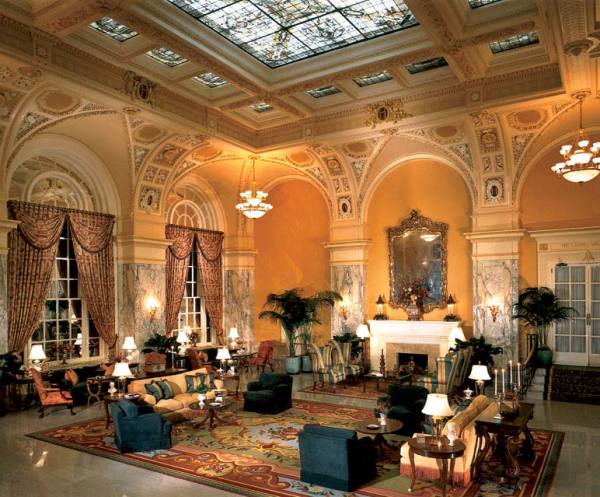
The hotel’s first restoration, in the 1980s, uncovered the magnificent painted-glass skylight in the lobby.
When a hotel sits at the intersection of politics (the Tennessee State Capitol is one block north) and country music (the Ryman Auditorium, the historic home of the Grand Ole Opry, is two blocks south), you can imagine it might rack up some interesting stories over the years. And indeed, in its 101-year history, Nashville’s Hermitage Hotel has amassed quite a collection.
There’s the time that a guest room was emptied of furniture and blanketed with canvas so cowboy minstrel Gene Autry’s beloved horse, Champion, could stay with him in the hotel. Legendary pool shark Minnesota Fats lived there for eight years; the management sprang for a $3,200 Steepleton billiards table so he’d have somewhere to play. In the early 20th century, the hotel served as a staging ground for the women’s suffrage movement; it’s hosted presidents, governors, and countless entertainers over the years.
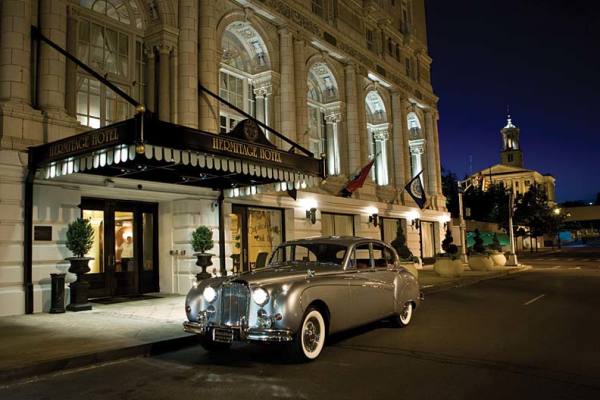
The hotel’s entrance was revamped during the latest restoration, in 2002.
But the Hermitage Hotel’s story hasn’t always been a happy one. The Beaux Arts building debuted in 1910, designed by native son J.E.R. Carpenter—who, as the first Tennessean formally trained in architecture, boasted a notable resume that included stints with H.H. Richardson and McKim, Mead, & White. (Carpenter would go on to design several luxury high-rise apartments along New York’s Fifth Avenue.) Local papers praised the “million-dollar hotel” for its use of exotic materials, including Italian marble in the lobby and Circassian walnut paneling (cut in the same style as the paneling aboard the Titanic) in the ballroom.
The Hermitage quickly became a focal point on the Nashville social scene, hosting everything from political dinners to pep rallies for Vanderbilt University’s football team. But by the 1960s, that original luster was beginning to fade, and in the next decade, it would disappear for good. In 1977, the hotel was shut down by the city for numerous health- and building-code violations.
A major restoration in 1980 brought the Hermitage back from the brink of destruction. The distinctive Italian painted-glass skylight that illuminates the lobby, which had been painted with black tar pitch at some point to control leakage, was painstakingly restored. Crumbling sections of the veranda’s terracotta walls were replaced, and acoustical tiles that had been added in the Capitol Grille, the hotel’s restaurant, were removed.
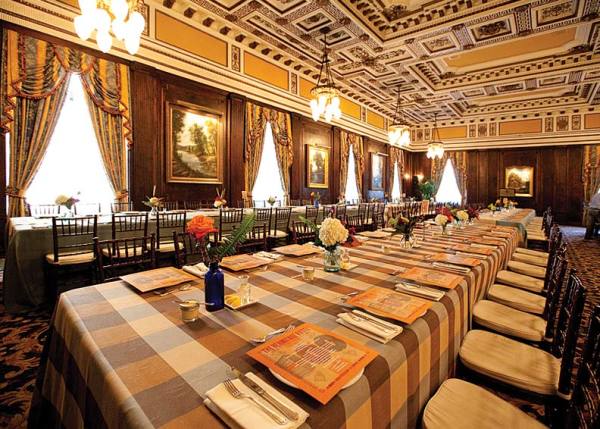
The Circassian walnut paneling in the grand ballroom is original; it was meticulously restored.
And yet, the hotel still struggled to stay above water for most of the 1980s and ’90s. Finally, in 2000, salvation came in the form of Historic Hotels of Nashville LLC, which bought the Hermitage and closed its doors for a year to embark upon its most ambitious renovation project to date. The $17 million effort sought to update the hotel’s early grandeur for a 21st-century clientele by meticulously restoring public spaces while adding the latest amenities.
Architect Ron Gobbell, whose firm, Gobbell Hays, led the restoration effort, says the team used historic photographs of the hotel as a guide for bringing back certain elements, but didn’t shy away from taking an interpretive approach in other areas.
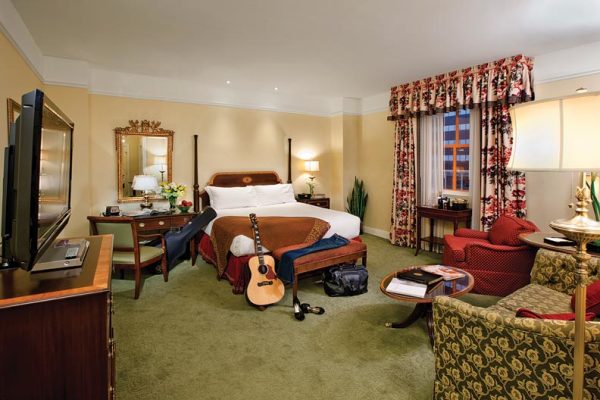
The latest renovation effort expanded guest rooms to a generous 500 to 650 square feet.
“In today’s world, people expect a much richer environment,” he explains. For instance, in the original iteration of the hotel, a cigar stand occupied the west wall of the lobby. Today, that same wall is home to a cozy seating area anchored by a fireplace with a classical mantel and marble surround, topped by a massive 11′ x 7′ gilded mirror that was rescued during the 1980s restoration.
In the ballroom, where the burled walnut paneling had dulled thanks to years of finish deterioration and grime, crews worked tirelessly to remove the dirt and old varnish by hand. Once the wood had been stripped, they hand-applied three new coats of varnish to return the paneling’s lustrous gleam.
Upstairs, the guest rooms were completely transformed. “We essentially took out everything they had done in the 1980s,” Gobbell says. The ’80s remodel had created suites with a parlor and bedroom; this project removed the parlor, creating more spacious bedrooms and expanding the bathrooms to include both walk-in showers and luxurious soaking tubs.
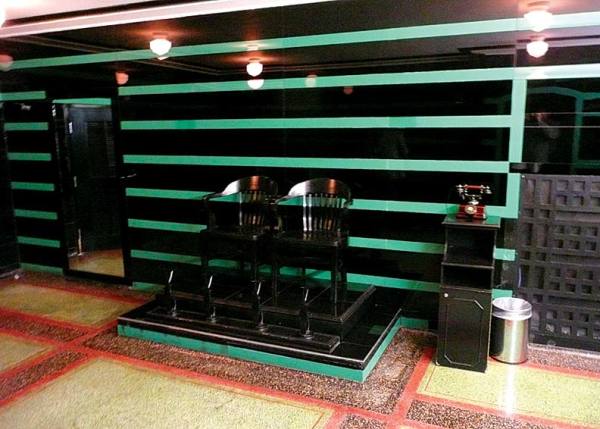
The Art Deco men’s room in the basement boasts its original shoeshine stand. (Photo: Adam Smith)
Throughout the various renovations, there’s one part of the hotel that’s remained virtually untouched: the green and black Art Deco-style men’s room in the basement, which is believed to have been added in the 1940s. When their research turned up evidence of the original 1910 bathroom, the hotel’s current owners debated whether to take out the distinctive terrazzo floors and mint-green sinks, but Gobbell put his foot down. “I said, ‘I don’t take many stands, but I’ll stand up for this bathroom,’” he laughs. The owners agreed, and the space received only minor updates (including the restoration of its original shoeshine stand). The bathroom has become a landmark in its own right, even winning the title of “America’s Best Restroom” in an online contest.
Since its grand reopening in 2003, the Hermitage has resumed its place at the center of Nashville’s social and political scenes. It’s not uncommon to see legislators and lobbyists breaking bread at the Capitol Grille, and the guest register often boasts celebrity names. But the real star is the hotel itself, which weathered a century of changing fortunes to emerge more elegant than ever.







